Fatema Zinna1, Samir Mukherjee2, Manjot Kaur Marwah3, Dyotona Sen4, Sanjay Choudhary5*
1Consultant Clinical and Aesthetic Dermatologist, GD Hospital and Diabetes Institute, Islamia Medical Institute, Kolkata, West Bengal, India
2Consultant Dermatologist, Dr. Samir’s Clinic, Padma Medical Store, West Bengal, India
3Consultant Dermatologist, Dr. Manjots Clinic, Jalandhar, Punjab, India
4Head Medical Affairs – India and South Asia, Galderma, Mumbai, India
5Manager, Medical Affairs – India and South Asia, Galderma, Mumbai, India
*Correspondence author: Sanjay Choudhary, Manager, Medical Affairs – India and South Asia, Galderma, Mumbai, India; Email: [email protected]
Published Date: 31-12-2024
Copyright© 2024 by Zinna F, et al. All rights reserved. This is an open access article distributed under the terms of the Creative Commons Attribution License, which permits unrestricted use, distribution, and reproduction in any medium, provided the original author and source are credited.
Abstract
Background: Skin dryness often arises due to high Transepidermal Water Loss (TEWL), reduced water content in the stratum corneum and diminished lipids. Hydration-based moisturizers have shown effectiveness in addressing skin barrier dysfunction and enhancing hydration.
Methods: A questionnaire-based study was conducted as part of a survey series on multiple dermatology products across India. Every month, a product-specific survey link was released to Healthcare Professionals (HCPs), particularly dermatologists, cosmetologists and pediatricians. This survey recorded the perspectives of 227 HCPs and the experiences of 1195 patients with the use of Optimal Hydration (OH) range as a treatment option for the management of dry and dehydrated skin.
Results: HCPs reported that most patients who visited them experienced dry and dehydrated skin (89.29%). Medical conditions such as atopic dermatitis/ichthyosis/ psoriasis and exposure to harsh chemicals were major causes of dry skin in most individuals. HCPs emphasized the essential role of moisturizers, particularly gentle and fragrance-free variants, in managing dry skin in most patients. HCPs preferred hydration-based moisturizers in the skincare regimen of patients with dry, dehydrated skin as these are light-weight and are compatible with various skincare regimens. Both HCPs and patients reported that the Optimal Hydration (OH) range had excellent effectiveness (46.22% and 50.51%, respectively) and excellent tolerability (48.47% and 49.78%, respectively). Moreover, most patients (90.53%) reported overall satisfaction with the use of the product.
Conclusion: The study findings support the use of personalized skincare regimens, including hydration-based moisturizers, such as Optimal Hydration (OH) range, to enhance outcomes in patients with dry, dehydrated skin. Evaluation of effectiveness, safety and overall patient satisfaction with Optimal Hydration (OH) range further confirms the value of this hydration-based moisturizer range as a reliable treatment option in clinical practice for managing dry and dehydrated skin.
Background: Skin dryness often arises due to high Transepidermal Water Loss (TEWL), reduced water content in the stratum corneum and diminished lipids. Hydration-based moisturizers have shown effectiveness in addressing skin barrier dysfunction and enhancing hydration.
Methods: A questionnaire-based study was conducted as part of a survey series on multiple dermatology products across India. Every month, a product-specific survey link was released to Healthcare Professionals (HCPs), particularly dermatologists, cosmetologists and pediatricians. This survey recorded the perspectives of 227 HCPs and the experiences of 1195 patients with the use of Optimal Hydration (OH) range as a treatment option for the management of dry and dehydrated skin.
Results: HCPs reported that most patients who visited them experienced dry and dehydrated skin (89.29%). Medical conditions such as atopic dermatitis/ichthyosis/ psoriasis and exposure to harsh chemicals were major causes of dry skin in most individuals. HCPs emphasized the essential role of moisturizers, particularly gentle and fragrance-free variants, in managing dry skin in most patients. HCPs preferred hydration-based moisturizers in the skincare regimen of patients with dry, dehydrated skin as these are light-weight and are compatible with various skincare regimens. Both HCPs and patients reported that the Optimal Hydration (OH) range had excellent effectiveness (46.22% and 50.51%, respectively) and excellent tolerability (48.47% and 49.78%, respectively). Moreover, most patients (90.53%) reported overall satisfaction with the use of the product.
Conclusion: The study findings support the use of personalized skincare regimens, including hydration-based moisturizers, such as Optimal Hydration (OH) range, to enhance outcomes in patients with dry, dehydrated skin. Evaluation of effectiveness, safety and overall patient satisfaction with Optimal Hydration (OH) range further confirms the value of this hydration-based moisturizer range as a reliable treatment option in clinical practice for managing dry and dehydrated skin.
Keywords: Dry Skin; Dehydrated Skin; Transepidermal Water Loss; Hydration-Based Moisturizer
Introduction
Skin is the outermost organ, which functions as a protective barrier against infections and physical and chemical damage [1]. Water constitutes 55% to 65% of body mass, with two-thirds of the body’s water located intracellularly, particularly within lean tissues. As we age, there is a decline in total body water, affecting both extracellular and intracellular fluid volume [2]. As it is the primary endogenous component, water imparts suppleness and flexibility to the upper layers of the skin. Water content is highest in the viable epidermis (over 70%) and decreases sharply at the junction between the stratum granulosum and stratum corneum, ranging from 15% to 30% [3]. The intrinsic water binding capacity of the skin is influenced by the natural moisturizing factor in corneocytes, hyaluronic acid and water transport facilitated by aquaporins [3]. Typically, well-hydrated, youthful and adequately moisturized skin is less vulnerable to environmental factors, thus minimizing the likelihood of itching and inflammation commonly associated with dry skin [1].
Dry skin or xerosis affects around 26-60% of individuals and is typically characterized by symptoms ranging from roughness, scaling and irritation, to more severe cases involving fissures or pain [4,5]. Although the pathophysiology is complex, an imbalance in the quality and quantity of lipids and/or hydrophilic substances disrupts the skin barrier function, often leading to dry skin [5,6]. A combination of internal factors, such as inflammatory conditions, endocrine and metabolic disorders, infections, diet and medications, along with external factors like environmental exposure, occupational hazards and the use of harsh products, as well as aging, contribute to skin barrier breakdown [6,7]. Dry skin is commonly associated with increased Transepidermal Water Loss (TEWL), reduced water content in the stratum corneum, decreased lipids between keratinocytes and lower levels of natural moisturizing factors and collagen. These conditions can delay the natural repair mechanisms of the skin [1].
Moisturizers improve skin hydration and maintain the skin’s natural pH balance, serving as a primary solution for skin barrier dysfunction [8]. The effectiveness of moisturizers depends on their ability to retain water within the stratum corneum, achieved through natural hygroscopic agents within corneocytes and structured lipids that form a barrier against TEWL. Ideal moisturizers should reduce TEWL, restore skin barrier function, provide immediate and long-lasting hydration and be non-sensitizing and fragrance-free [9].
Rationale of the Study
Moisturizers are generally classified as humectants, occlusives and emollients, depending on their primary effect on the skin.8 Humectants work by drawing water from the deeper layers of the epidermis to the stratum corneum and trapping moisture from the atmosphere, potentially enhancing hydration within the stratum corneum [8,10]. The effectiveness of moisturizers in enhancing and preserving the skin barrier integrity and hydration largely depends on their composition [9]. The Optimal Hydration (OH) range moisturizer used in the present study consists of a novel formulation with active skin hydrating agents, such as Aquaxyl, Glycerol, Hyaluronic Acid and Blue Daisy (Globularia alypum) extract. Through this study, we wanted to evaluate the perceptions, preferences and experiences of Healthcare Professionals (HCPs) with the use of Optimal Hydration (OH) range moisturizer for the management of dry, dehydrated skin.
Methods
A questionnaire-based study on multiple dermatological products was conducted across India (2023). A product-specific survey link was shared with the registered doctors and each doctor was allowed to take up to 10 surveys for a maximum of 2 products. The survey on Cetaphil Optimal Hydration (OH) range involved the participation of 227 HCPs (dermatologists, cosmetologists), through which their perspectives on the management of dry dehydrated skin, the use of the Optimal Hydration (OH) range and patient experiences with the products were assessed.
Product Composition
Cetaphil Optimal Hydration (OH) range consists of Aquaxyl, Glycerol, Hydrolyzed Hyaluronic Acid and Blue Daisy (Globularia alypum) extract as active ingredients. Other ingredients include Dicaprylyl Carbonate, Caprylic/Capric Triglyceride, Glyceryl Stearate Citrate, Cetearyl Alcohol, Niacinamide, Anhydroxylitol, Butyrospermum parkii Oil, Citric Acid, Panthenol, Pantolactone, Phenoxyethanol, Sodium Benzoate, Sodium Polyacrylate, Squalane, Tocopherol, Xylitol and Xylitylglucoside.
Study Tool and Data Collection
A structured survey comprising 19 questions was used for data collection. The questionnaire is included in Appendix I for reference. The survey link was rolled out in September 2023.
Data Analysis
The data was analyzed using Microsoft Excel Spreadsheets version 2021 and descriptive statistics were calculated using predefined Excel formulas.
Results
Demographic Details
The study included 227 HCPs, particularly dermatologists, cosmetologists and 1195 patients with dry, dehydrated skin from across India. The HCPs reported that most patients visiting them with complaints of dry, dehydrated skin were females (61.8%).
Causes of Dry, Dehydrated Skin
HCPs reported that a considerable proportion of their patients (89.29%) presented with dry, dehydrated skin. To identify the major causes, the HCPs were asked to select multiple relevant factors, resulting in 3170 responses. The most commonly reported causes were medical conditions such as atopic dermatitis, ichthyosis, or psoriasis (28.02%), followed by exposure to harsh chemicals (22.53%), low ambient humidity (22.45%) and aging and stress (22.05%) (Fig. 1).
Common Presenting Complaints
To identify common presenting complaints, 1,637 responses were analyzed. Patients frequently reported dullness with dryness (15.08%), dehydrated skin (14.41%) and high sensitivity (14.29%). Notably, most patients (56.20%) experienced all these conditions simultaneously (Fig. 2).
Perceptions on the Use of Moisturizers for Dry, Dehydrated Skin
A 3-point scale (1-Disagree, 2-Agree and 3-Strongly agree) was used to evaluate the importance of various skincare parameters for managing dry skin. Most HCPs strongly agreed that maintaining water within the stratum corneum is crucial for preserving normal skin integrity and turnover in most of their patients (53.09%). Additionally, in most cases (57.00%), HCPs considered diligent use of moisturizers as fundamental for treating dry, dehydrated skin. Furthermore, HCPs strongly agreed that gentle, fragrance-free moisturizers should be chosen for optimum results in most patients (59.39%) (Fig. 3).
Ideal Properties of a Moisturizer for Managing Dry, Dehydrated Skin
HCPs, through multiple option selections, identified several key properties of moisturizers necessary for managing dry, dehydrated skin. Out of the 1676 responses, the most selected attributes were reducing TEWL (12.05%), improving skin barrier function (11.03%), promoting free radical scavenging (10.44%) and supporting keratinocyte proliferation and migration (10.20%). However, most responses (56.26%) reported that all these characteristics were essential in a moisturizer for effective treatment of dry, dehydrated skin (Fig. 4).
Reasons for Choosing Hydration-Based Moisturizers
From a total of 3,363 responses (with multiple options selected), HCPs highlighted several key reasons for incorporating water-based moisturizers into skincare routines for dry, dehydrated skin. The leading factors included their lightweight nature and compatibility with most skincare regimens (26.19%), their ability to lock in moisture for longer periods (24.73%) and their effectiveness in making the skin look supple and youthful for longer durations (23.96%) (Fig.5).
Experience with the Optimal Hydration (OH) Range
The HCPs reported prescribing the Optimal Hydration (OH) range to most of their patients (96.63%).
Onset of Improvement in Symptoms
Most patients (37.51%) saw improvement in their skin condition within a week of Optimal Hydration (OH) range use. Others observed improvement in skin condition within a period of 2 weeks (25.93%) to a month (14.36%) (Fig. 6).
Ease of Incorporating Optimal Hydration (OH) Range in Skin Care Regimen
The majority of patients (96.97%) found it easy to incorporate the Optimal Hydration (OH) range into their skincare regimen (Fig. 7) and most were compliant with the routine, with 72.45% adhering to it consistently (Fig. 8).
Assessment of Optimal Hydration (OH) Range
A 4-point scale (1-Poor, 2-Satisfactory, 3-Good and 4-Excellent) was used to assess clinical and patient experiences with the Optimal Hydration (OH) range. The effectiveness and tolerability of Optimal Hydration (OH) range was rated as excellent and good by most HCPs and patients. Moreover, HCPs reported that majority of their patients (90.53%) were overall satisfied with the use of the Optimal Hydration (OH) range for managing dry, dehydrated skin (Fig. 9).
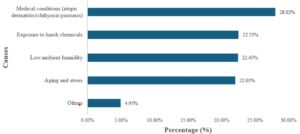
Figure 1: Common causes of dry, dehydrated skin.
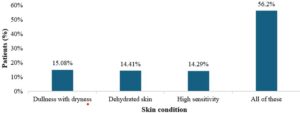
Figure 2: Commonly reported complaints.

Figure 3: Management of dry skin.

Figure 4: Ideal properties of a moisturizer.
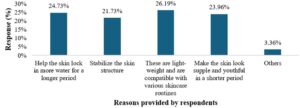
Figure 5: Reasons for choosing hydration-based moisturizers.
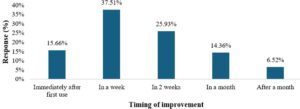
Figure 6: Onset of improvement observed in patients.
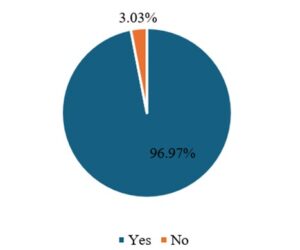
Figure 7: Incorporating Optimal Hydration (OH) range into skincare regime.
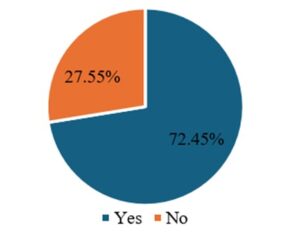
Figure 8: Patient compliance.
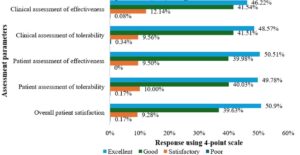
Figure 9: 4-point scale response on assessment of Optimal Hydration (OH) range.
Discussion
In the present study, common causes of dry and dehydrated skin were identified as skin conditions, such as atopic dermatitis, ichthyosis and psoriasis, exposure to harsh chemicals, low humidity, ageing and stress. Similarly, a study by Augustin, et al., investigating the prevalence and risk factors of dry skin found that age, chronic inflammatory conditions, infections and various dermatological conditions (e.g., eczema, psoriasis, seborrheic dermatitis etc.) were significantly associated with xerosis [11].
The essential role of water flux and retention in maintaining healthy skin is well-established [12]. Research indicates that the effective use of moisturizers provides symptomatic relief in dry skin conditions by interrupting the dry skin cycle while preserving skin smoothness [13]. As a result, moisturizers are a critical component of dermatologist-recommended regimens for managing skin conditions associated with impaired barrier function [9]. In line with this evidence, most HCPs in the present survey agreed that water is crucial for maintaining normal skin integrity and turnover. They also strongly believed that consistent use of moisturizers is fundamental for treating dull and dehydrated skin and emphasized that gentle, fragrance-free moisturizers should ideally be selected for this population. Consistent with previous discussions on the qualities of an ideal moisturizer,9 HCPs in this survey rated the ability to improve skin barrier function and reduce water loss as some of the most important attributes of a moisturizer.
The effectiveness of moisturizers in enhancing and preserving the skin barrier integrity and hydration largely depends on their composition [9]. Research shows that hydrophilic moisturizers, due to their low molecular weight, penetrate deeper into the skin and mimic the role of natural moisturizing factors, making them particularly suitable for normal to dry skin [14,15]. In the present study, HCPs commonly choose hydration-based moisturizers for most patients due to their long-lasting moisture retention, lightweight texture and compatibility with various skincare routines. In a recent study, Gyoung Ha, et al., reported that a novel hydrogel-based cream composed of key hydrating elements such as hyaluronic acid and glycerin, significantly improved skin hydration and skin surface lipids in patients with xerosis. After 8 weeks of application, the participants reported a marked reduction in xerosis severity scale score [16].
The Optimal Hydration (OH) range moisturizer used in the present study consists of active skin hydrating agents, such as Aquaxyl, Glycerol, Hyaluronic Acid and Blue Daisy (Globularia alypum) extract. Glycerin is the most extensively used humectant in moisturizers. Its ability to increase skin hydration can range from 1% to over 25%, with the most significant improvements observed at concentrations between 20% and 40%, depending on the formulation. In addition to its hydration properties, glycerin has been shown to promote skin barrier regeneration by improving the stratum corneum integrity, stability and mechanical properties. It also aids in the degradation of desmosomes, contributing to improved skin barrier function [10]. A study by Lodén and Wessman investigated the impact of a cream containing 20% glycerin on skin barrier properties compared to a placebo cream in a bilateral, double-blind trial with 17 healthy volunteers. The study demonstrated that glycerin significantly increased skin hydration, as measured by corneometer values, after 10 days of treatment [17].
Natural plant sugar derivatives, including xylitylglucoside, anhydroxylitol and xylitol, enhance skin hydration and strengthen the skin barrier [18]. In combination with glycerol, xylitol has shown to improve skin hydration and protein quantity of filaggrin, decrease the TEWL and improve the biomechanical properties of the skin [19]. The study by Fluhr, et al., explored how glycerol, with xylitylglucoside, anhydroxylitol and xylitol and blue daisy botanical extract modulate the water-binding properties and structural parameters of the stratum corneum using an in-vitro Raman-desorption model. The study found that both the natural sugar-derived complex and, more notably, the same mixture with added glycerol increased all water-binding parameters, both at the skin surface and at an 8μm depth within the stratum corneum. This effect persisted during a desiccation phase after a 12-hour hyperhydration period. While the natural sugar-derived mixture improved stratum corneum hydration, lipid packing and protein structure, the addition of glycerol further enhanced these benefits [20].
Hyaluronic acid is another popular humectant, frequently referred to as a skincare wonder ingredient. It is extremely hygroscopic in nature and supports keratinocyte proliferation, migration and wound healing [10]. A study by Nam Gyoung Ha, et al., evaluated the efficacy of a novel hydrogel-based moisturizing cream containing hyaluronic acid cross-linked with silicone polymers, designed for patients with xerosis. The results showed significant improvements in skin hydration and skin surface lipids (p < 0.05) and a reduction in Xerosis Severity Scale (XSS) scores (p < 0.05) over time. When compared with a conventional moisturizer, both products significantly increased skin hydration and decreased XSS scores (p < 0.05). Participant satisfaction was high, with 100% of participants expressing satisfaction with the novel hyaluronic acid-based moisturizer [21].
In the current study, HCPs reported that a significant proportion of patients observed improvements in their skin condition within a week with the Optimal Hydration (OH) range. Most patients found it easy to integrate the Optimal Hydration (OH) range into their skincare routines and the majority were compliant with the regimen. Both HCPs and patients gave high ratings for the safety and tolerability of the Optimal Hydration (OH) range.
Strengths and Limitations
The study demonstrates several strengths, including comprehensive data collection from a substantial cohort of healthcare professionals and patients across India, providing diverse perspectives and insights. It addresses clinically relevant issues related to the management of dry and dehydrated skin, offering practical value for dermatological practice. The evaluation of the Optimal Hydration (OH) range highlights its efficacy, safety and tolerability, supported by patient-reported outcomes, such as satisfaction and ease of use. These strengths collectively enhance the study’s contribution to understanding and optimizing the management of dry and dehydrated skin in clinical settings. The study’s limitations include its focus on a specific cohort of healthcare professionals and patients in India, which may affect the generalizability of the findings to diverse populations. Additionally, the use of self-reported data introduces potential biases and inaccuracies associated with subjective perceptions and recall variability.
Conclusion
The Optimal Hydration (OH) range proved effective in improving skin hydration, with most patients noticing improvements within a week. The product was safe and well-tolerated by the patients, expressing overall satisfaction. The positive experiences with the Optimal Hydration (OH) range among the HCPs and their patients underscores its potential as an effective and reliable treatment option for dry and dehydrated skin. The findings of this study also contribute valuable insights to clinical practice and emphasize the importance of personalized skincare regimens to optimize patient outcomes.
Conflict of Interest
Dr. Fatema Zinna, Dr. Samir Mukherjee and Dr. Manjot Kaur Marwah declare no conflict of interest. Dr. Sanjay Chaudhary and Dr. Dyotona Sen are employees of Galderma India Pvt Ltd.
Acknowledgement
We acknowledge the medical writing support provided by Medicca Press Ltd.
Funding
The study was sponsored by Galderma India Pvt Ltd.
Author Contributions
All authors contributed equally on this final manuscript.
References
- Ooi K. Onset mechanism and pharmaceutical management of dry skin. Biol Pharm Bull. 2021;44(8):1037-43.
- Thomas DR, Cote TR, Lawhorne L, Levenson SA, Rubenstein LZ, Smith DA, et al. Understanding clinical dehydration and its treatment. J Am Medical Directors Assoc. 2008;9(5):292-301.
- Bonté F. Skin moisturization mechanisms: new data. Annales Pharmaceutiques Franįaises. 2011;69(3):135-41.
- Fluhr JW, Moore DJ, Lane ME. Epidermal barrier function in dry, flaky and sensitive skin: A narrative review. Journal of the European Academy of Dermatology and Venereology. 2024;38(5):812-20.
- Gade A, Matin T, Rubenstein R. Xeroderma. StatPearls Publishing. 2024.
- Augustin M, Wilsmann‐Theis D, Körber A et al. Diagnosis and treatment of xerosis cutis – a position paper. JDDG. 2019;17(S7):3-33.
- Andriessen A. Prevention, recognition and treatment of dry skin conditions. British Journal of Nursing. 2013;22(1):26-30.
- Ainurofiq A, Haya AF, Safitri AN, Solihatin IZ, Nusriya SB, Nugroho TS. Characterization and application of moisturizer in skin treatment: A review: Moisturizer in Skin Treatment. J Pakistan Association of Dermatologists. 2023;33(4):1602-13.
- Madnani N, Deo J, Dalal K. Revitalizing the skin: Exploring the role of barrier repair moisturizers. JCD. 2024;23(5):1533-40.
- Mawazi SM, Ann J, Othman N. Review of moisturizers; history, preparation, characterization and applications. Cosmetics. 2022;9(3):61.
- Augustin M, Kirsten N, Körber A. Prevalence, predictors and comorbidity of dry skin in the general population. J Euro Acad Dermatol and Venereol. 2018.
- Proksch E, Berardesca E, Misery L. Dry skin management: Practical approach in light of latest research on skin structure and function. Journal of Dermatological Treatment. 2019;1-28.
- Purnamawati S, Indrastuti N, Danarti R. The role of moisturizers in addressing various kinds of dermatitis: a review. Clin Med Res. 2017;15(3-4):75-87.
- Van Zuuren EJ, Fedorowicz Z, Christensen R. Emollients and moisturizers for eczema. Cochrane Database Syst Rev. 2017;2(2):CD012119.
- Rodan K, Fields K, Majewski G. Skincare bootcamp: the evolving role of skincare. Plast Reconstr Surg Glob Open. 2016;4(12):e1152.
- Ha NG, Kim SL, Lee SH. A novel hydrogel-based moisturizing cream composed of hyaluronic acid for patients with xerosis: An intraindividual comparative analysis. Skin Res Technol. 2023;29(11):e13499.
- Lodén M, Wessman W. The influence of a cream containing 20% glycerin and its vehicle on skin barrier properties. International journal of cosmetic science. 2001;23:115-9.
- Leite e Silva VR, Schulman MA, Ferelli C, Gimenis JM, Ruas GW, Baby AR, et al. Hydrating effects of moisturizer active compounds incorporated into hydrogels: in-vivo assessment and comparison between devices. J Cosmet Dermatol. 2009;8(1):32-9.
- Korponyai C, Szél E, Behány Z, Varga E, Mohos G, Dura Á, et al. Effects of locally applied glycerol and xylitol on the hydration, barrier function and morphological parameters of the skin. Acta Derm Venereol. 2017;97(2):182-7.
- Fluhr JW, Tfayli A, Darlenski R, Darvin ME, Joly-Tonetti N, Lachmann N. Glycerol and natural sugar-derived complex modulate differentially stratum corneum water-binding properties and structural parameters in an in-vitro Raman-desorption model. Journal of Biophotonics. 2023;16(1):e202200201.
- Ha NG, Kim SL, Lee SH, Lee WJ. A novel hydrogel-based moisturizing cream composed of hyaluronic acid for patients with xerosis: An intraindividual comparative analysis. Skin Research and Technology. 2023;29(11):e13499.
Article Type
Research Article
Publication History
Received Date: 28-11-2024
Accepted Date: 24-12-2024
Published Date: 31-12-2024
Copyright© 2024 by Zinna F, et al. All rights reserved. This is an open access article distributed under the terms of the Creative Commons Attribution License, which permits unrestricted use, distribution, and reproduction in any medium, provided the original author and source are credited.
Citation: Zinna F, et al. Management of Dry and Dehydrated Skin and Effect of Optimal Hydration Range: A Survey on Indian Dermatologists’ and Cosmetologists’ Insights and Patient Experiences. J Dermatol Res. 2024;5(3):1-9.

Figure 1: Common causes of dry, dehydrated skin.

Figure 2: Commonly reported complaints.

Figure 3: Management of dry skin.

Figure 4: Ideal properties of a moisturizer.

Figure 5: Reasons for choosing hydration-based moisturizers.

Figure 6: Onset of improvement observed in patients.

Figure 7: Incorporating Optimal Hydration (OH) range into skincare regime.

Figure 8: Patient compliance.

Figure 9: 4-point scale response on assessment of Optimal Hydration (OH) range.


